Results 1 to 10 of 12
-
10-17-2018, 01:05 PM #1Senior Member


- Join Date
- Feb 2018
- Location
- Manotick, Ontario, Canada
- Posts
- 2,798
Thanked: 557 Wade and Butcher with awful bevel
Wade and Butcher with awful bevel
I really like this razor. It has nice weight and fits my hand well.
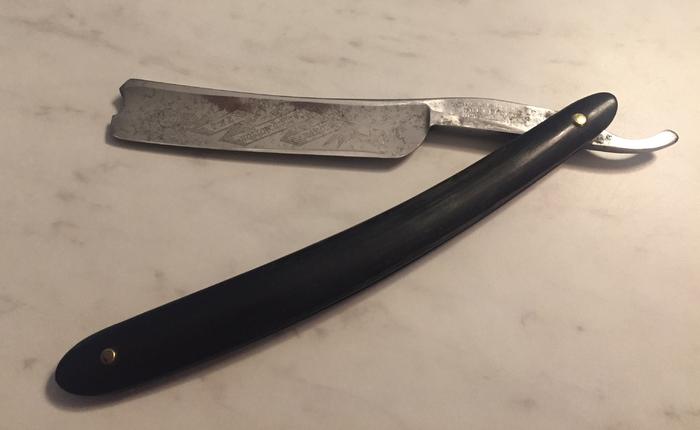
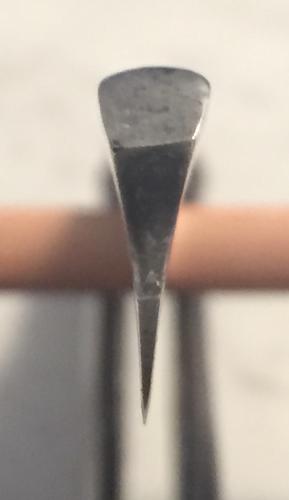
The blade is in pretty good shape, but someone really went to town on the stones. There is quite a bit of hone wear and the bevel is really quite uneven .
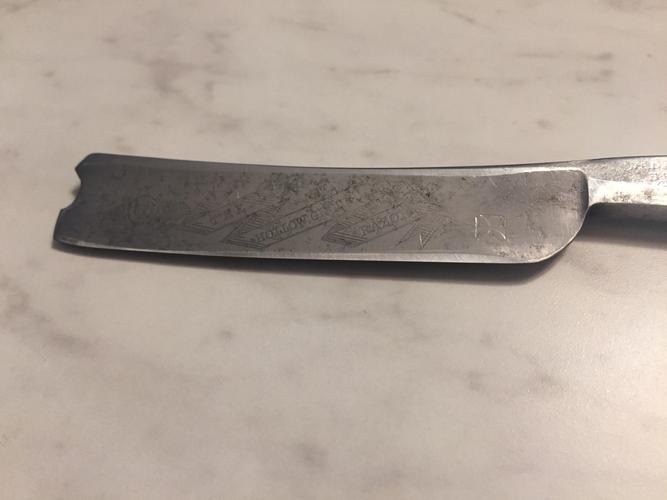
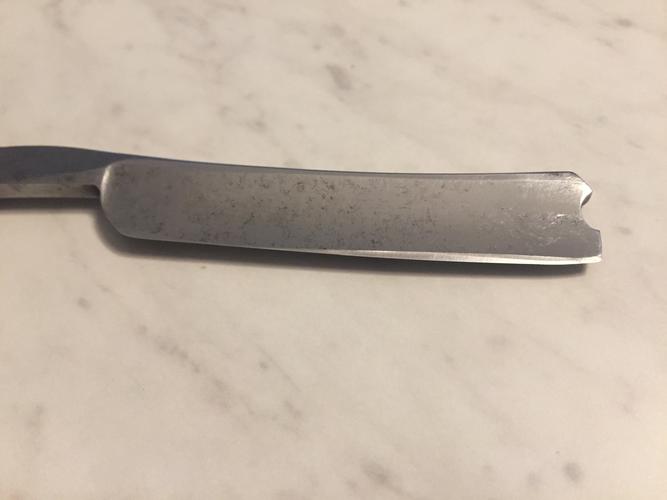
At it’s narrowest, the blade is about 5/8”.
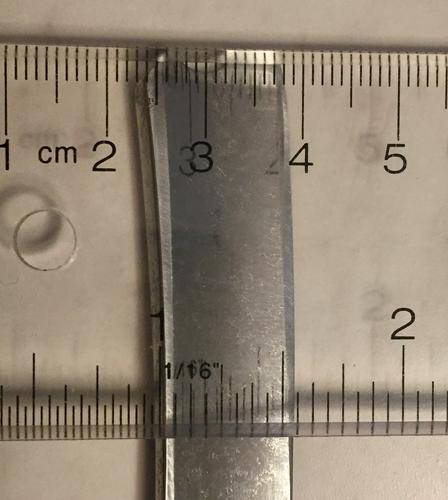
I figure my options are:
1. Hone it with a layer of tape and do the best I can with the existing bevel.
2. Send it out to be reground, but I’m worried there isn’t a lot of width to work with.
3. Use extra tape and hone a new micro-bevel and leave the old bevel as is.
Any suggestions?David
“Shared sorrow is lessened, shared joy is increased”
― Spider Robinson, Callahan's Crosstime Saloon
-
10-17-2018, 02:39 PM #2

I'd measure the bevel angle and decide from thereon onward
Sometimes the issues we see is cosmetic, things aren't always perfect and wear can look asymmetrical without a negative impact on it's function, or it can be problematic
I'd measure the bevel angle, figure out if I need tape and how many layers and a marker to color in my edge to see how it reacts on the stones
-
The Following User Says Thank You to TristanLudlow For This Useful Post:
DZEC (10-17-2018)
-
10-17-2018, 03:11 PM #3Senior Member




- Join Date
- Feb 2013
- Location
- Haida Gwaii, British Columbia, Canada
- Posts
- 14,444
Thanked: 4828
The goofy bevel is part the way therazors was ground, but also if you look at the hone wear, it is as goofy as the bevel. It will most likely be a cosmetic issue. There was a table on a coticule web site that should spine width vs blade width to give you a bevel angle. The spine width you could increase the size by adding tape to find your sweet spot. I went there a lot when I first started honing to make sure I had the correct angle. Now I just guess, for yours I’m going to guess two layers. You can try three. A micro bevel is easy to produce but it won’t change the wonky bevel. Having a razor reground is a little pricey, so you would want to pick your candidate carefully.
It's not what you know, it's who you take fishing!
-
The Following User Says Thank You to RezDog For This Useful Post:
DZEC (10-17-2018)
-
10-17-2018, 03:24 PM #4Senior Member


- Join Date
- Apr 2008
- Location
- Saint Paul, Minnesota, United States
- Posts
- 2,944
Thanked: 433
A few layers of tape will probably work just fine, I've had some W&B's way worse than that and they took a very nice edge. Also make the rolling X-stroke your friend, it really helps with bevels like that
-
The Following User Says Thank You to rodb For This Useful Post:
DZEC (10-17-2018)
-
10-17-2018, 03:38 PM #5
-
The Following User Says Thank You to sharptonn For This Useful Post:
DZEC (10-17-2018)
-
10-17-2018, 03:43 PM #6Senior Member



- Join Date
- Mar 2012
- Location
- Thunder Bay, Ontario, Canada
- Posts
- 17,324
Thanked: 3228
Like the others have said, you can get an uneven bevel from a badly ground blade or a blade that is warped/twisted. It is cosmetic and the blade should still shave well.
To determine how many layer/layers of tape you need to use you can go here http://coticule.be/wedges.html . Take the spine and blade width measurements, place them in the Excel document and read the results.
A rolling X stroke is really good for dealing with a warp/twist in a blade. The blade looks to be symmetrically ground to me even if the barber's notch was done at an angle and many were.
You may never get perfectly even and thin bevels on that blade but it should still shave well.
BobLife is a terminal illness in the end
-
-
10-17-2018, 04:03 PM #7

I just did one like that. Posted on SOTD. Wonky bevel and bad hone ware. Took me a while to get bevel set but i went with 3 layers then removed one, then finished bevel set with one one layer. The measuring of the edge angle is a must for me. It gives you the info needed to know what is best. From there you adjust.
Some blades will have the tinyest bevel in one area and 1/4" wide on other parts. Its just looks. W&B seem to be this way more than not. But thats JMO.It's just Sharpening, right?
Jerry...
-
10-17-2018, 04:08 PM #8Senior Member


- Join Date
- Feb 2018
- Location
- Manotick, Ontario, Canada
- Posts
- 2,798
Thanked: 557
Just revisited Lynn’s video on the rolling X. It looked like he was using a W&B just like mine.
I wonder if the way those razors were initially ground led to wonky bevels in many of them. Rez suggested that was the cause in his comments and it was suggested by Lynn in the video.David
“Shared sorrow is lessened, shared joy is increased”
― Spider Robinson, Callahan's Crosstime Saloon
-
The Following User Says Thank You to DZEC For This Useful Post:
JBHoren (11-12-2018)
-
10-17-2018, 05:35 PM #9Senior Member



- Join Date
- Mar 2012
- Location
- Thunder Bay, Ontario, Canada
- Posts
- 17,324
Thanked: 3228
More vintage blades than you would think have grinding issues or warps/twists. That is not confined to W&B blades alone. If you hone those flat on the stone you will get wonky bevel and spine wear. That is where the rolling X stoke really helps things out along with the correct amount of layer/layers of tape on the spine.
BobLife is a terminal illness in the end
-
10-17-2018, 07:53 PM #10

My take on large uneven bevels are this, it's mostly down to a poor understanding of how to hone a razor and the past owners who have overly enthusiastic honed that razor, very few vintage razors have poor geometry issues, I have honed 200-year-old razors that took a beautiful small even bevel, but once the spine as significant hone wear then it's down to your own level of skill on how you are going to correct that, and they will need correcting because a 4:1 ratio must be maintained if you are hoping to achieve any kind of even bevel, that's not to say a larger bevel doesn't work, but they certainly didn't leave the factory that way.
“Wherever you’re going never take an idiot with you, you can always find one when you get there.”


 18Likes
18Likes LinkBack URL
LinkBack URL About LinkBacks
About LinkBacks






 Reply With Quote
Reply With Quote

